By building tourist-friendly infrastructures and market places and restoring cultural, religious and historic sites along a 13.5-kilometer cycle track Suryodaya municipality in Ilam is expanding tourism business to bolster the local economy.
A Cycle Track Paves Way for Local Prosperity and Development
April 8, 2024
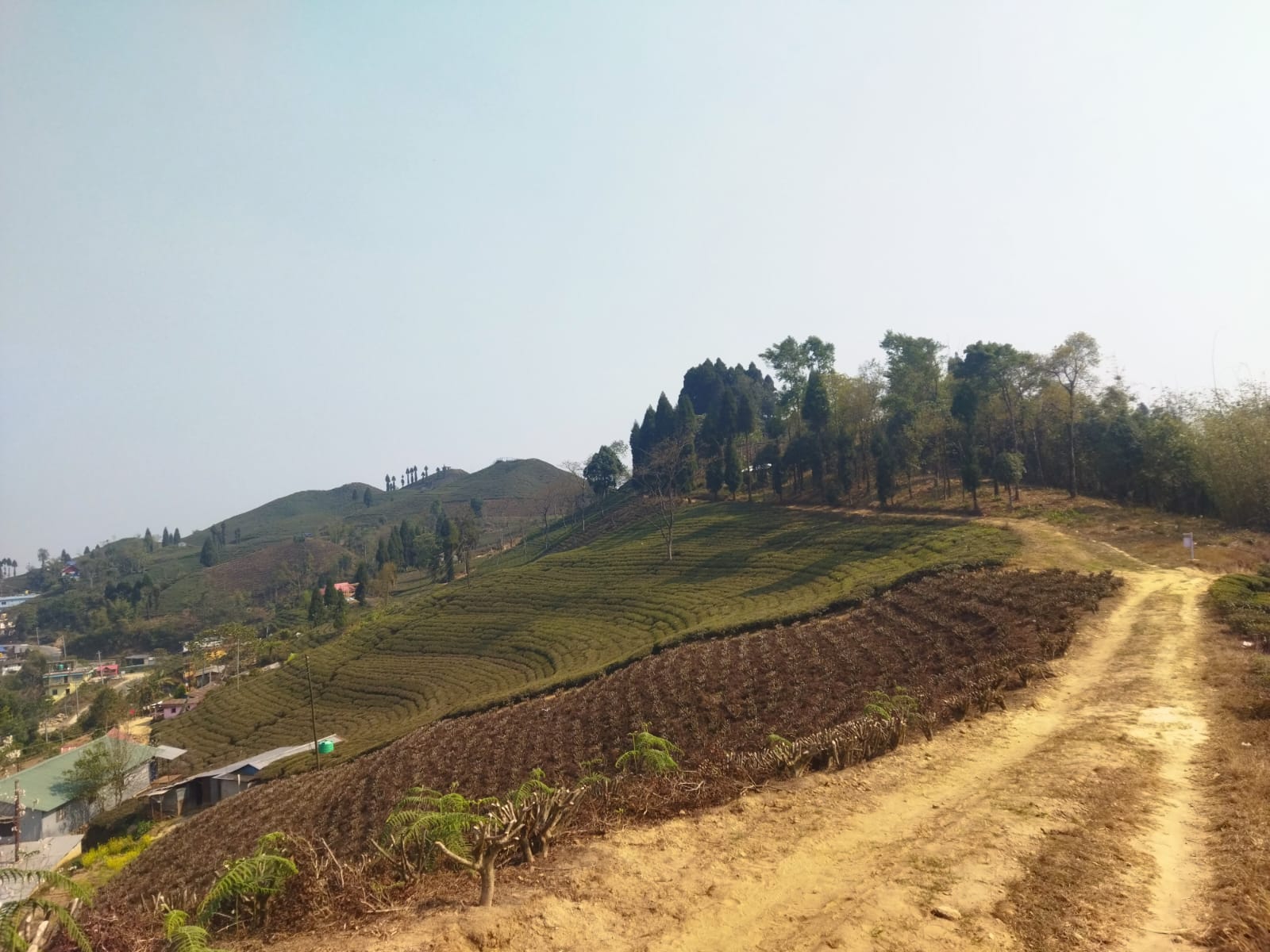
Fikkal Bazaar, Ilam
Before Ran Bahadur Rai was elected as mayor of Suryodaya Municipality in Ilam this local government’s annual revenue was just Rs 7.4 million. Kanyuam, Antu Danda, Buddha Park, Fikkal, major tourism destinations in the district of Ilam, eastern Nepal, were managed by community forest users’ groups and private firms.
The royalty paid by these firms to the municipality was lower than the revenue generated by these tourist destinations.
For example, the municipality was receiving Rs. 100,000 from a local community forest users’ group, the organization awarded to manage popular tourist site Antu Danda as tourism royalty. It was receiving Rs 51,000 for leasing out Kanyam, another popular tourism destination in Ilam.
Frustrated by poor management of tourist destinations and nominal revenue generation, Mayor Rai explored ways of tourism promotion, increased the number of business stalls around established tourist destinations and awarded them to locals through open bidding. Several activities for tourism promotion such as cycle track, suspension bridge with glass deck, revival of disappearing Lepcha culture, expansion of homestays and organic agricultural products production and local business promotion are underway.
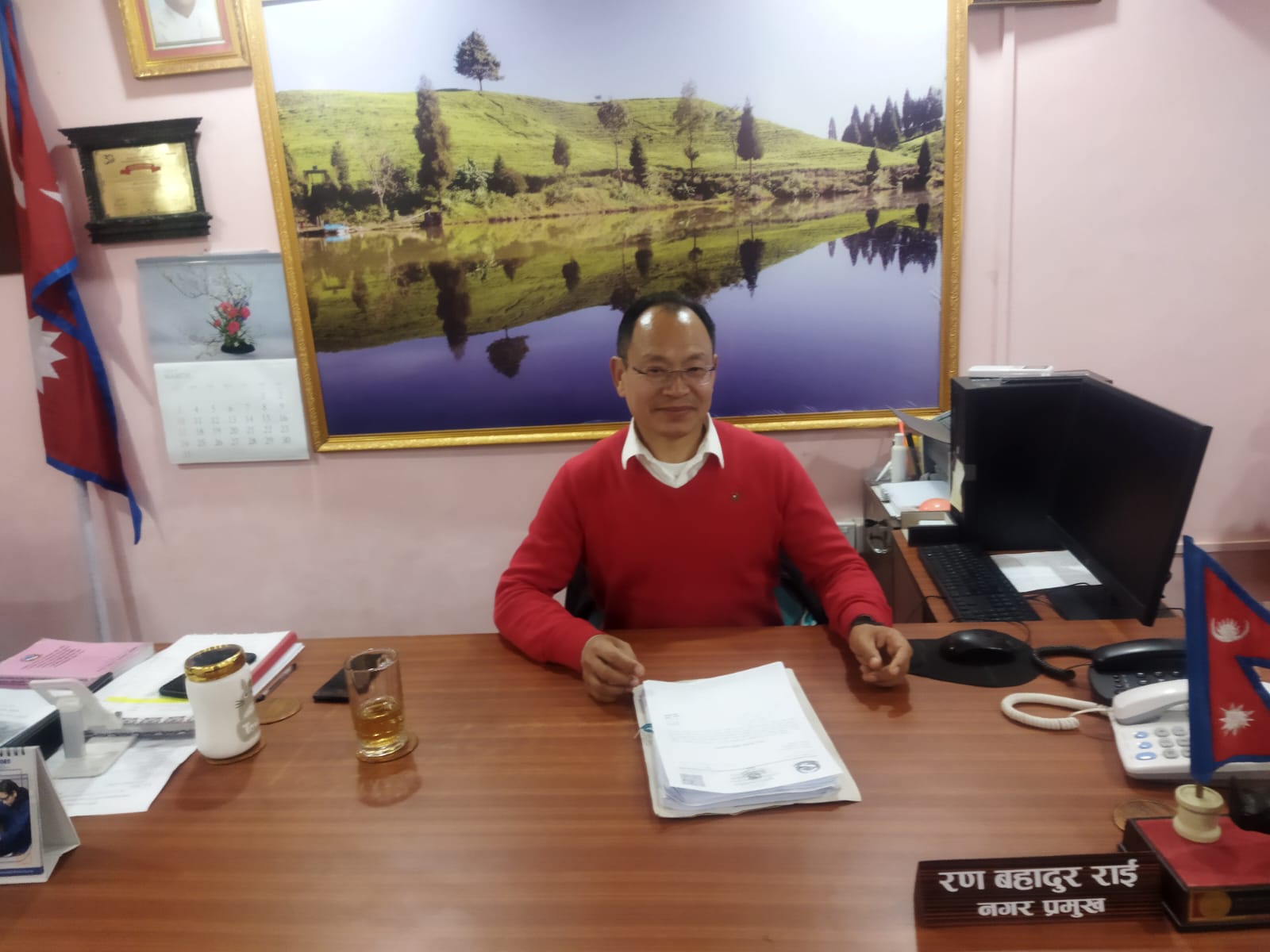
“Now, the municipality’s annual revenue stands at 100 million,” said Mayor Rai, “57,000 was collected from Antu Dada in a day after we initiated a campaign to revive tourism.”
With this successful revenue model, Rai realized one thing: tourism promotion is impossible just by branding already established tourist destinations like Antu Danda, Kanyam and Fikkal. His conclusion was that without building new physical infrastructures and local innovation to attract the younger generation, retaining the aura of tourism in Ilam was impossible. To materialize the same innovative concept, Cycle Track for Local Social, Cultural and Economic Development was initiated in Suryodaya Municipality. The program is coming into full operation soon.
The program initiated for social, cultural, and economic development of the locals in Suryodaya municipality aims to connect all societal aspects, lure youngsters from neighboring countries and promote tourism in Ilam. These innovative tourism promotion efforts were made possible after the local government joined hands with the UN Development Programme Nepal. The support was provided as part of an Innovative Partnership Fund component project funded under the Provincial and Local Governance Support Programme (PLGSP). PLGSP is a flagship programme of the Government of Nepal funded by Switzerland, Norway, the United Kingdom and the European Union, with UNDP as a technical support provider. The program was designed to bring all stakeholders together to make this city in eastern Nepal a vibrant tourist destination.
The Programme financed Rs 15 million to the municipality as seed money. Since the Programme has no policy to support infrastructures the municipality invested Rs 98,200,000 on its own to create tourist-friendly infrastructures. The UNDP Nepal’s fund was used to train locals in operating homestays, reviving organic farming, income generation skills and management skills whereas municipalities built needy structures— for marketing, bridge, cycle track and museum building.
The cycle track designed for social, cultural, and economic development of the municipality is scheduled to inaugurate to 2-24.
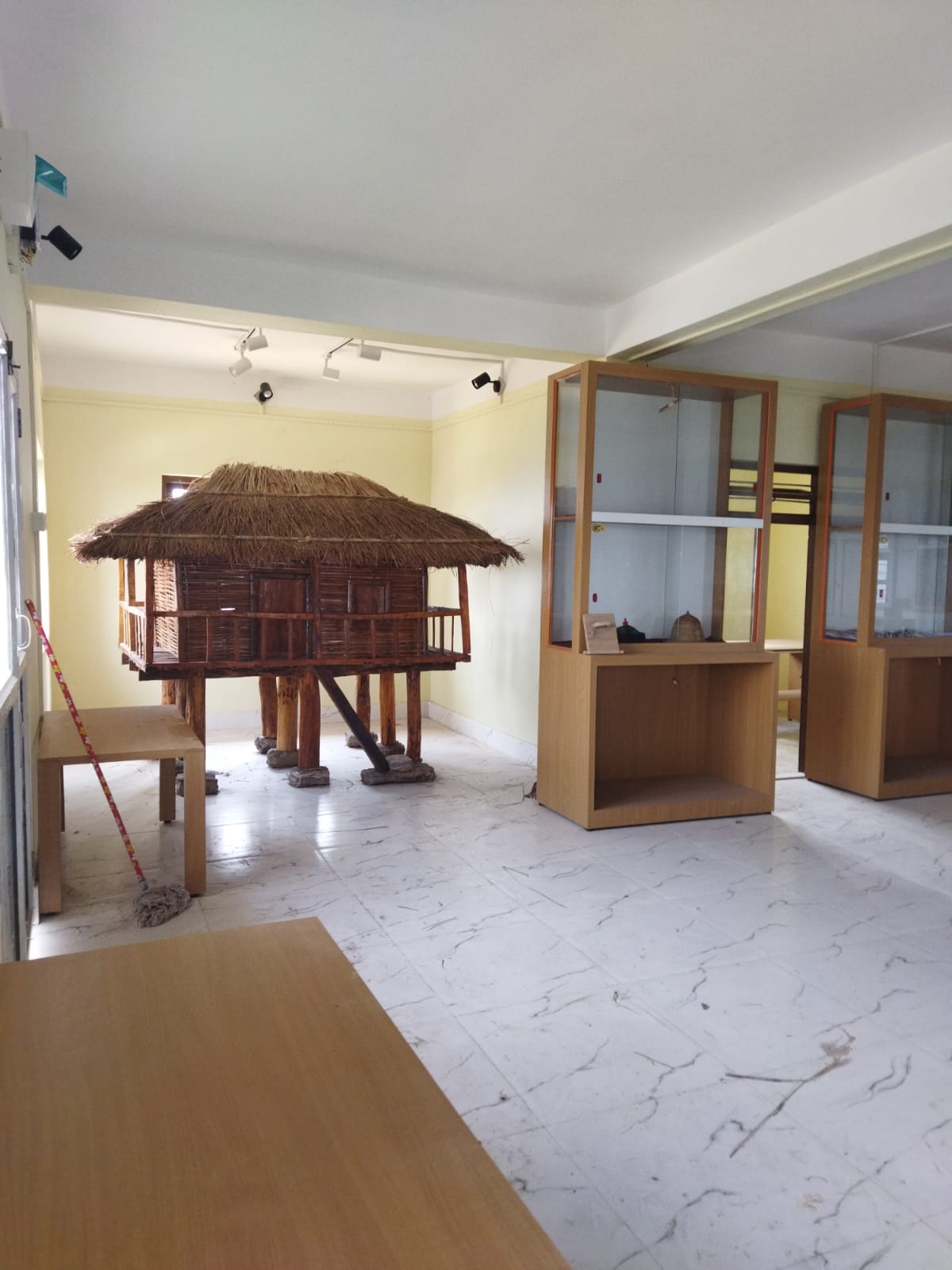
Cycle Track
A 13.5-kilometer cycle track, which passes through tea states, connects Kanyam areas between Kanyam, Pune danda, marketplaces, touristic, religious, cultural and historic sites in the municipality. In a bid to promote cycling in the hills of Suryodaya, the municipality had awarded Raj Rawat Construction Company to build the ancient route, upgrade some of the existing portion and build small bridges over streams. Several social, economic and cultural aspects such as a health park, vegetable markets, settlements of indigenous Lepcha community and homestays are built along the track. Those infrastructures, according to municipality chief executive officer Milan Bhattarai, were created considering all aspects of tourism and livelihoods of local people.
“By the end of this month the project will be handed over to the municipality,” said Milan Bhattarai, chief executive officer of the municipality.

Subsidized Market Center
Altogether 16 market stalls are constructed in Kanyam, a tourist destination from where the trail begins. The idea of the marketplace called Sajha Subidha Kendra (Subsidized Market Center), was developed with the aim of creating a market space for local products-- tea, chhurpi, ginger, lentils, meat, gift items and local sweets among others—and encourage local entrepreneurs and businessmen.
Of the 16 stalls, four stalls are allotted for marginalized communities, where they can do their business with nominal rent as compared to other stalls awarded through open bidding.
“We constructed these structures and those awarded to operate stalls have designed the interior as per their convenience,” said Shrijan Gadal, an architect engineer and IPF focal person, “Stalls are now in operation. This will benefit locals in the long run.”
The stalls are used to sell tea, chhurpi, ginger, lentils, lollipops, meat shops and gift items. Aimed at increasing market access to more people, the municipality aims to construct more subsidized places in tourist destinations in days to come.
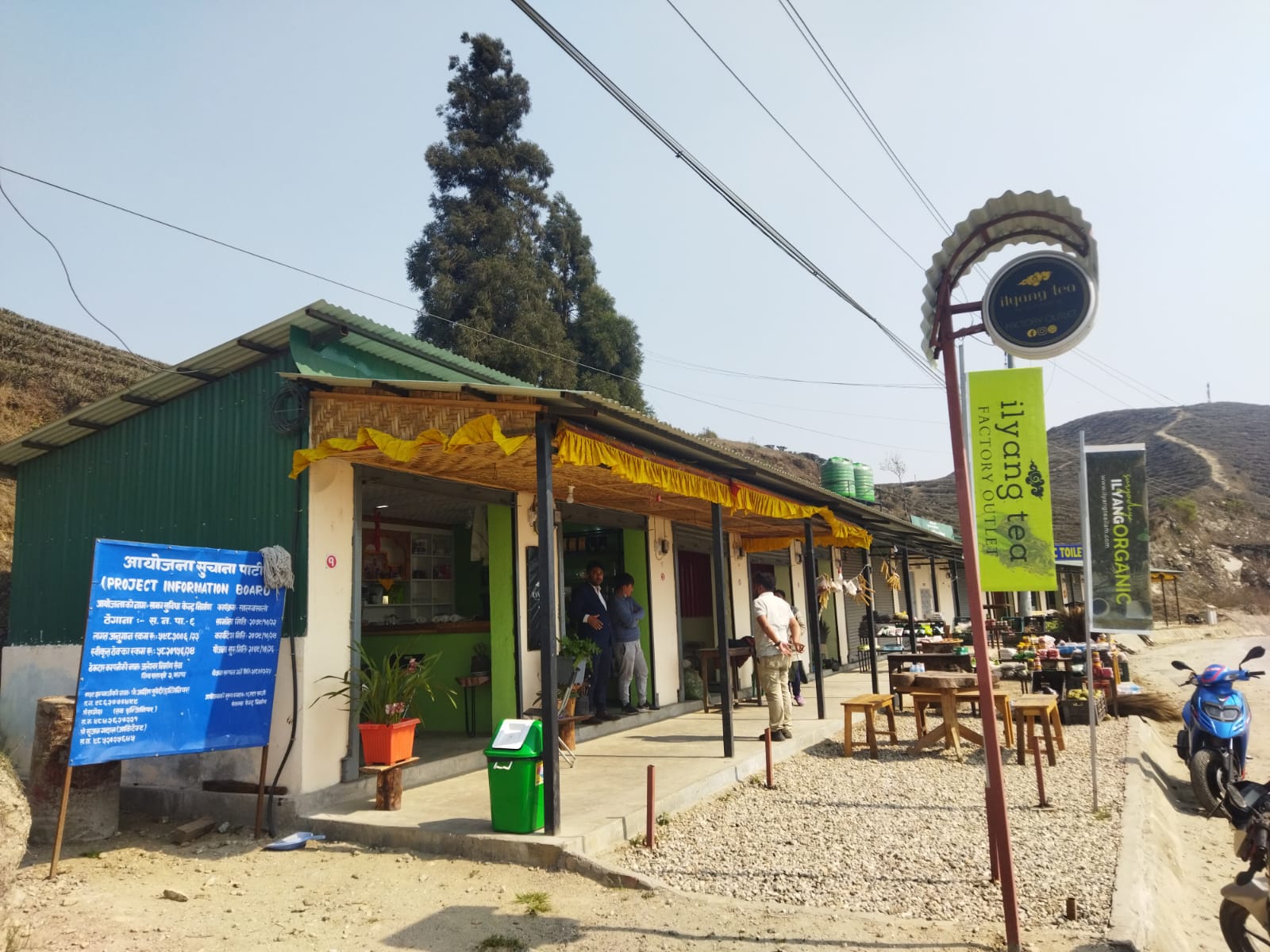
The market center has been in operation for the last nine months. Locals have now started to take advantage of the new marketplace.
“We were looking for stalls to promote our products since our own factory was established in 2023,” said Pemba Yalmo, 27, a proprietor of Ilyang Tea. “We bagged two stalls—one for tea and another for local organic product sales. Since its off-season business is not so good. Let’s hope things will improve.”
The marketplace is close to the main highway and rent is affordable. So, locals have turned to entrepreneurs, quitting their previous profession.
“I used to teach at a private school as a primary teacher,” said Muna Subedi, a local product seller at Sajha Subidha Kendra,” Now, I have started my business.”
Ms. Subedi, who is from Taragaun, sells local vegetables, chhurpi, tea and pickles. As part of her business, she drives 45 minutes to reach Kanyam daily. This has boosted her morale to become an entrepreneur. “It’s been easier to sell local products. The flow of people is low. Let’s hope business grows,” said Subedi.
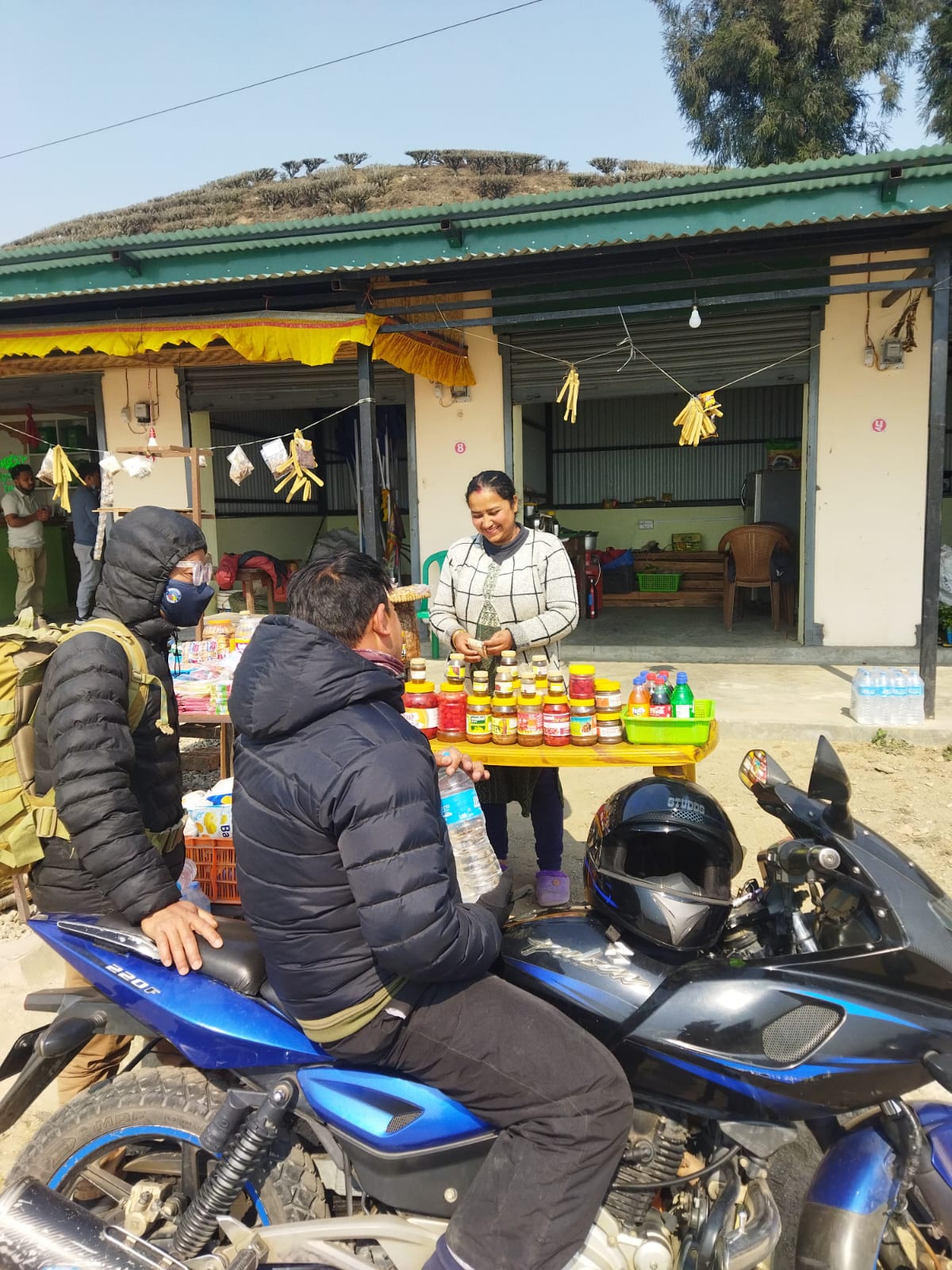
Suspension bridge with glass deck
In view of attracting tourists, mainly youngsters from Nepal, Bhutan, and Bangladesh a 150-meter suspension bridge with a glass deck is under construction. The bridge was constructed to connect two hill points of Mane Danda, which sits atop a private tea garden. Aimed at developing homestays around the bridges the municipality has allocated Rs 76,100,000. A separate by-law has been promulgated to build 65 homestays so that rich people couldn’t build tall buildings around the suspension bridge.
“Our target is to inaugurate the cycle track and this suspension bridge by mid-October,” said Gadal, “Then, the flow of tourists will increase.”
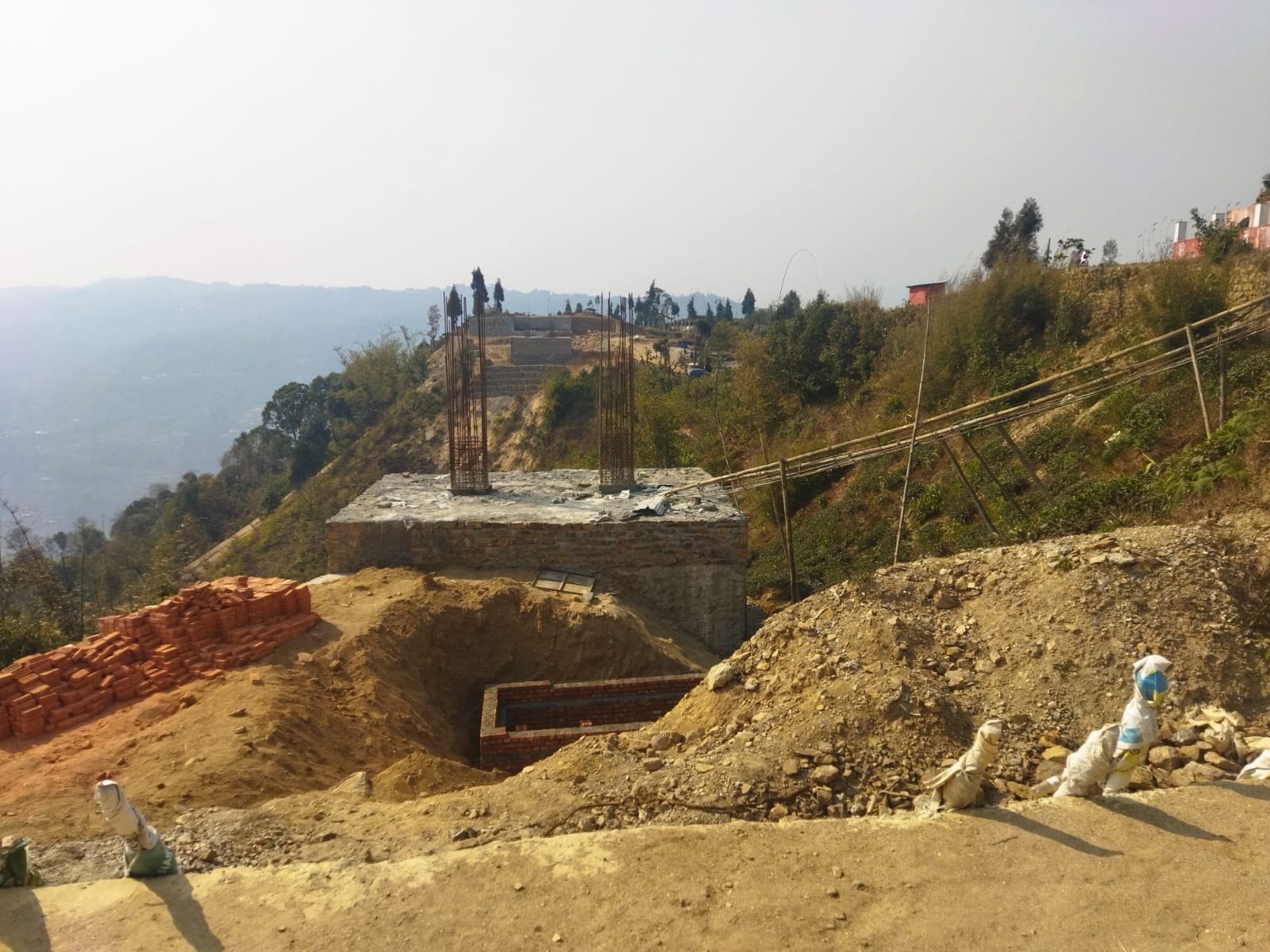
Tens of thousands of tourists from India and Bhutan arrive in Ilam. The municipality expects tourists from Bhutan and India will be attracted to Ilam after the construction of a suspension bridge with glass dec—the first of its kind developed by the local government in attracting youngsters. The idea of suspension bridge with a glass deck was introduced with a collusion of mere tea gardens that wouldn't attract tourists in the changed context.
“Tourism itself is a concept. Mere branding of Kanyam and Fikkal may not attract tourists, so we are focused on developing adventure tourism spots that youngsters are liking the most,” said Mayor Rai.
Home Stay and Organic Vegetable Production
Considering to ease the stay of people walking through the cycling track homestays are developed around the suspension bridges and Karfok, which is the next stop. An agricultural innovation center is being developed around the homestay area.
Tourists from Nepal and abroad are arriving in Karfok. Those residing in Kathmandu have started to return to their villages and develop their houses constructed in the middle of tea state as home stays. Chandra Sapkota, a retired veterinary doctor is one among a few. He has built a beautiful wooden house in the middle of a tea state, that too without using exported construction materials.
Few years ago, I was alone. Since tourists started to flock to villages seeking shelters other locals have also started home stay service in home. The municipality trained them on how to operate home stays.
Sapkota can accommodate up to two dozen people in his house. But he’s not accommodating them all. Instead, he’s sending guests to neighbors so that they could all be involved in the homestay business community.
“We are in the process of finalizing common homestay working procedures,” said Sapkota adding, “Female members associated with the Homestay Program are already trained mainly on food related training, producing organic vegetables and managing homestays.”
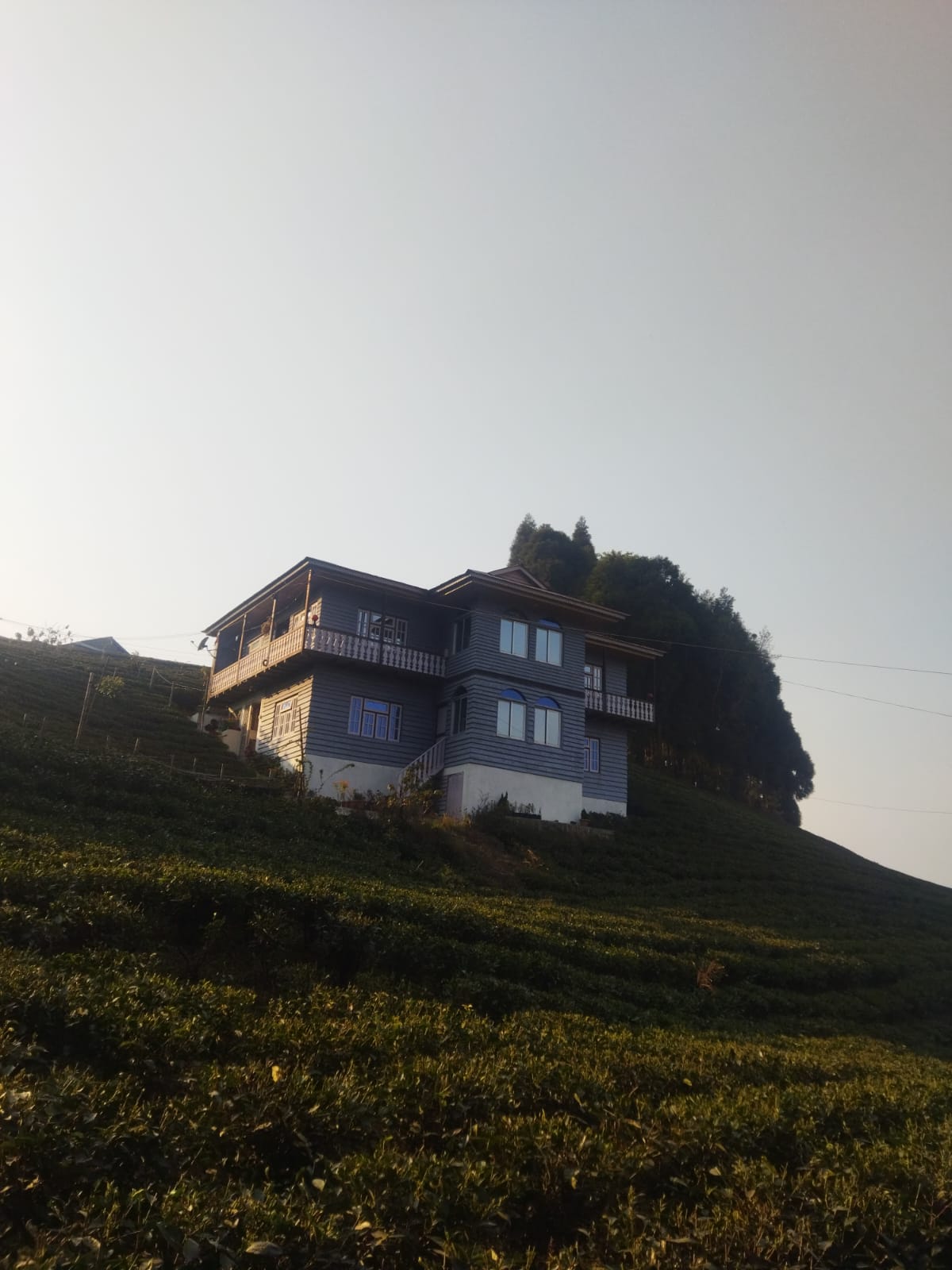
To manage home stay a group of 16 Homestay Operators are already in action. Locals are expanding homes to accommodate more people considering the operation of the cycle track in mind. “I myself had constructed another home stay close to the cycle track,” said Sapkta, “Home stay is exclusively a profit-making business, no loss at all. No need to pay rent and no waste of food.
Encouraged by ongoing development activities, progress made in expanding touristic activities and increased revenue collection Mayor Rai is hopeful the municipality will be a self-reliant government in 25 years as envisioned. In terms of financial discipline, the municipality has a record of less than 1 percent arrear. This has encouraged local leaders to achieve the target of becoming an economically self-reliant local government very soon.
“By the end of October this year, all tourism infrastructures envisioned under the IPF program will be completed,” said Mayor Rai, “That will give one more push to boost tourism in our municipality.”
***

 Locations
Locations



